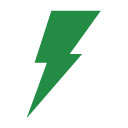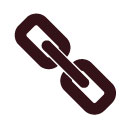KB Corner: Network Troubleshooting Guide
May 2018 Tags: Resources
A majority of errors and problems that firms encounter result from a failure in their network software or hardware. So how can you tell if it’s a network error, and how do you stop these errors from occurring?
Fatal errors reported by the software can be shown with either three or four segments. For example, you may receive an error 1020-1-53 (three segments) or a 1400-0-36-64 (four segments). We can tell what most network errors are by looking at the last segment of the error. Network connectivity problems are typically reported with a last segment of 6, 53, 55, 59, 64, 121, 1231, or 10054. However, other errors can also signify an issue with the network connection. The examples used above are network connectivity errors because the last segments are 53 and 64.
There are many things to look at when diagnosing where a network problem resides. Since many network problems are intermittent, occur only under heavy workload, and may not be reproducible on demand, it can be difficult to determine and diagnose the problem. Any communication problems with the file server can cause errors.
Knowledge Base Article R10184, “Network Troubleshooting Guide,” provides ideas and tools to help you and your IT professional troubleshoot network issues. This article includes information on understanding errors, identifying the scope of the issue, and network troubleshooting suggestions.
Our Knowledge Base can be accessed 24 hours a day, 7 days a week, at support.Tabs3.com. You can also access our Knowledge Base while in the software by selecting Help | Internet Resources | Knowledge Base.
Related posts:
Comments are closed.
Recent Comments
- James Hunter on Spotlight: Reorder Fees
- Tabs3 Software on Video of the Month: PracticeMaster Conflict of Interest
- Stephanie Biehl on Video of the Month: PracticeMaster Conflict of Interest
- Junita Hawkins on Feature Article: Common Client Related Files
- Tabs3 Software on Tabs3 Connect: Tabs3 Connect Subscriptions



